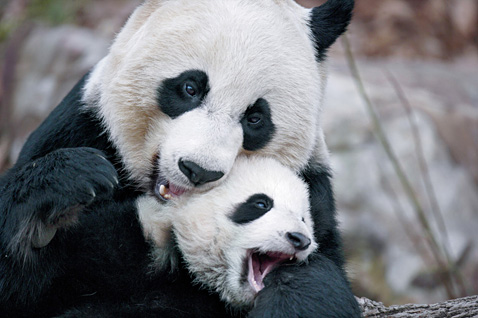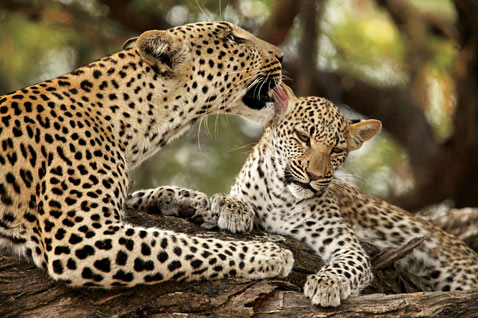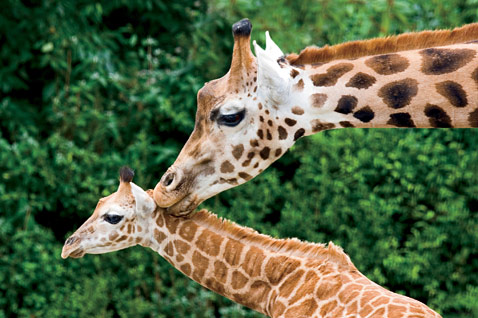A Mother's Love
The National Geographic Society's Melina Gerosa Bellows found herself in a situation that is a mother's worst fear: She was rushing her young son to the hospital after finding him lying on the floor of their home.
Luckily, after a battery of tests and examinations, doctors discovered it wasn't as serious as Bellows had feared - just a type of muscle spasm. But that experience inspired her to write about the strength of a mother's love.
The following is an excerpt and images from her book, "Mother's Love: Inspiring True Stories from the Animal Kingdom."
There may be no stronger power on Earth than a mother's love. But humans aren't the only ones who go to such elaborate lengths for the sake of their young - so do mothers in the animal kingdom.

Born blind and deaf, kittens depend on their mother's sense of sight and hearing, navigating the world by touch, taste and smell for the first three weeks of life. (Orhan Cam/Shutterstock)
There's Scarlett, the cat who ran into a burning building five times to rescue each of her kittens. There's the duck who convinced a strange human to drop everything and help her save her eight ducklings. (How she knew a Good Samaritan when she saw one, we'll never know.) And who can forget the dog that adopted a motherless baby squirrel and raised it along with her own puppies?

A dominant mother pig typically gives birth to more male piglets than the subordinate sows. (Craig W. Walsh/iStockphoto)

Newborn sea otters can float, but they can't swim. Mothers balance them on their stomachs. (Lynn M. Stone/Nature Picture Library)

A giant panda might nurse her young as often as 14 times a day, 30 minutes at a time. (Michael Nichols/National Geographic)

A leopard leaves her cubs for as long as 36 hours to hunt. On her return she is likely to move them to a new lair for safety. (Beverly Joubert/National Geographic)

Giraffe mothers give birth on their feet - and their newborns drop six feet to the ground, head first. The fall actually helps them take first breaths. (Mariann Rea/National Geographic)

(Photo by Anup Shah)
Working at the National Geographic Society, Melina Gerosa Bellows has been fortunate to hear a wealth of fascinating animal stories.
"If the reports from the field weren't from the world's best photographers and researchers," said Bellows, "the tales would strain my credulity. Truth be told, however, I've become addicted to them. For some reason, the uncanny combination of 'awe' meets 'awww' resonates with me."